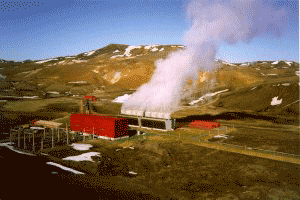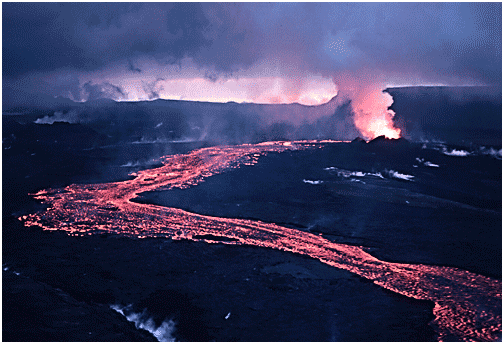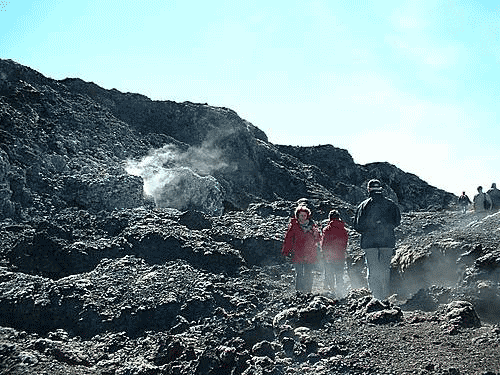Krafla
geothermal power station
 Local
sightseeing and tourism Local
sightseeing and tourism
Krafla‘s location near Lake Myvatn makes
it an ideal stopping
place for travelers in north Iceland. Just above the station is a
popular hiking area including the recent lava field around
"Leirhnjukur" and the explosion crater "Viti" (Hell), both
popular sightseeing attractions. A reception room has been set up at
the Krafla Station where visitors can find out about its history and
the harnessing of geothermal energy for electricity
production. At the
Krafla Visitor Center you will find information on geothermal
energy and on the station’s electricity production. Also, the
company of "Landsvirkjun" and Iceland’s energy production are
introduced in general, and visitors can view a film about the Krafla
eruptions.
The
Krafla Visitor Center is open from 12:30-3:30 p.m. on weekdays and 1-5
on weekends.
Outdoor
recreation and tourism
Just
above and north of the station, popular
walking trails lead through the vicinity of and the explosion
crater "Viti" (“hell”). A short round trail goes
around the mar (crater) "Viti" dating from 1724, to a hot spring area
east of the mar, where caution is needed. This route is about a half
an hour's easy walk.
The
power station
Krafla
in north Iceland is "Landsvirkjun‘s" main geothermal power
station. "Landsvirkjun" operates an other geothermal utility, at
"Bjarnarflag", with an installed capacity of only 3 MW.
From
the outset, Krafla was in the public eye in Iceland, with much
political controversy surrounding its construction. For a while it was
uncertain whether Krafla would ever actually enter operation, when
large-scale volcanic eruptions started only two kilometers away from
the station, posing a serious threat to its existence. Work continued,
however, and the station went on stream early in 1977.
Krafla‘s
colorful history makes it one of the best-known power stations in
Iceland. An average of 20 employees work at the station, plus site
maintenance teams in summer.
In 1996, "Landsvirkjun" decided to install a second turbine
unit and
prospect for steam for it. Drilling began immediately using improved
technology which proved highly successful both for developing new
boreholes and upgrading existing ones. Some 33 boreholes have now been
drilled for the Krafla station and the extension is complete. On
average, 15-17 boreholes are used at any time and the station now
operates with an installed capacity of 60 MW, as originally planned.

 |
 |
|